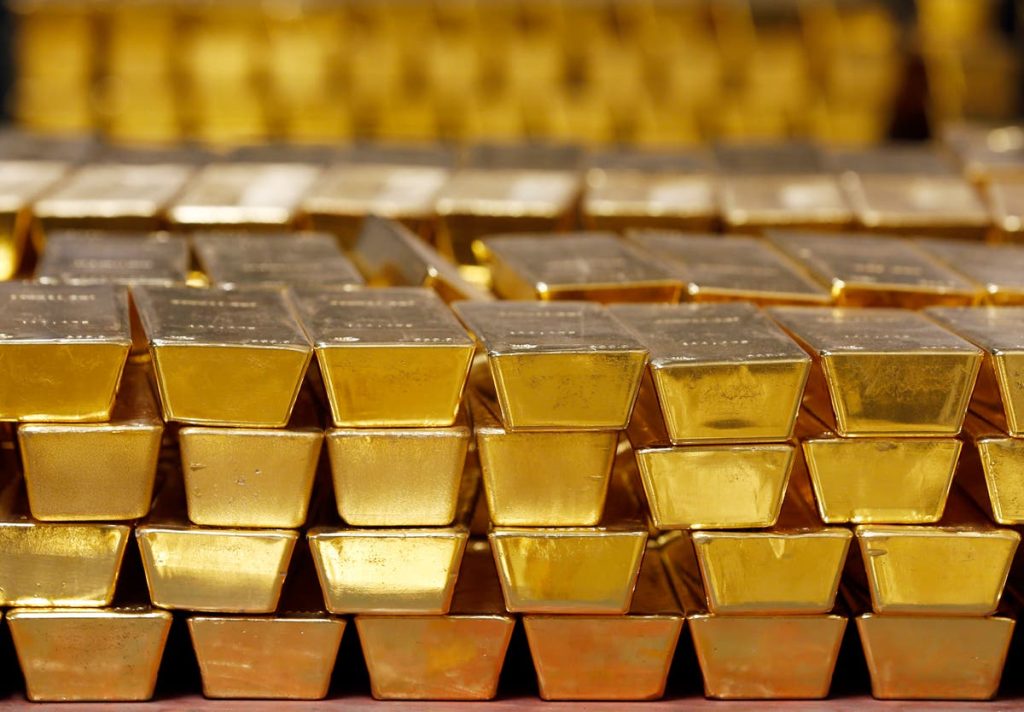As global events unfold, gold prices have surged to unprecedented heights, highlighting its status as a safe haven for investors.
With ongoing geopolitical tensions and economic pressures, this precious metal’s value continues to rise sharply.
Gold as a Safe Haven Asset
In times of economic uncertainty and geopolitical tension, many investors view gold as a safe haven asset. The recent skyrocketing of gold prices exemplifies this phenomenon, with prices reaching £2,097.67 ($2,732.73) per ounce. This trend underscores gold’s role as a protective measure amidst global unpredictability.
Despite its allure, gold is not a long-term investment solution. It does not generate income like stocks or real estate. Its value is highly dependent on market sentiment, which can lead to sudden price fluctuations. Nevertheless, those seeking stability often turn to gold during periods of financial turbulence.
Influencer-Driven Investment Shifts
The renewed interest in gold can partly be credited to online influencers. Having experienced volatility with meme stocks and cryptocurrency, these individuals now advocate for gold as a more reliable investment option. This shift has contributed to the metal’s recent popularity. Many see gold as a steadfast alternative in an otherwise volatile investment landscape.
However, experts remain cautious. They warn that investment decisions led by social media trends can be risky. Gold, with its own set of volatility issues, should be approached with careful consideration despite its current allure.
Different Camps of Gold Investment
Investors are often divided into two camps when it comes to gold. One group, following Warren Buffett’s philosophy, views the metal as an unproductive asset due to its limited industrial uses. They argue that it lacks the potential for generating income.
Conversely, other investors see gold as a valid currency alternative. Citing its limited supply and historical significance, they consider it a valuable asset in a world where fiat currencies are losing value. This dual perception influences investment strategies worldwide.
Russ Mould, an investment director at AJ Bell, comments on this dichotomy. He remarks that gold’s value is significantly shaped by investor sentiment. People’s belief systems regarding currency erosion and economic stability greatly impact gold’s desirability.
Economic Pressures in the United States
The economic situation in the US adds further complexity to gold’s rising value. The nation is projected to pay $1.1 trillion more in interest on government debt over the next decade. Such fiscal pressures have caught the attention of investors concerned about inflation.
The potential for increased interest costs, which could even surpass defence spending, causes unease. As inflation looms, gold becomes an attractive option for those seeking to safeguard their wealth. Investors watch central banks’ moves closely as they navigate the tightrope of economic growth versus inflation control.
Geopolitical Tensions and Their Impact
Beyond economics, geopolitical tensions also contribute to gold’s rising appeal. The tightening presidential race in the US adds layers of uncertainty to the financial markets. Additionally, ongoing conflicts in Ukraine and the Middle East create global instability.
With no foreseeable end to these hostilities, investors are hedging their bets. Gold offers a semblance of security amid the chaos. Its historic role as a stable investment during conflict adds to its attractiveness. Amid such turmoil, the desire for reliable assets intensifies.
These factors combined make the gold market increasingly dynamic. Investors continue to monitor external events, understanding that geopolitical developments profoundly impact financial decisions.
Gold’s Volatility and Market Sentiment
Despite its perceived safety, gold’s volatile price behavior is noteworthy. Prices fluctuate based on market sentiment, unlike traditional income-generating assets such as stocks and bonds.
Market reactions driven by fear, optimism, or uncertainty significantly impact gold prices. This volatility underscores the need for investors to continuously evaluate their gold portfolio as market conditions evolve.
Conclusion
As global tensions and economic uncertainties persist, gold’s role as a safe haven asset remains prominent. Although it does not provide long-term financial gains, it offers a reliable shield against inflation and instability. Investors must weigh the benefits of its stability against the risks of volatile price swings.
Ultimately, whether due to economic fears or geopolitical strife, gold persists as a symbol of security in an unpredictable world.
Amidst widespread instability, gold stands firm as a protective financial asset, though it remains essential for investors to consider its inherent volatility.
In turbulent times, gold’s enduring appeal as a stable asset reinforces its role in protecting wealth. Investors continue to rely on it amidst unpredictable global shifts.

